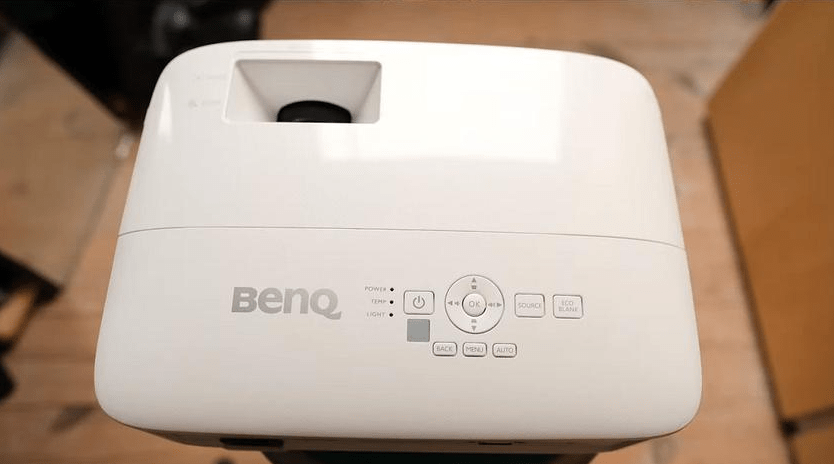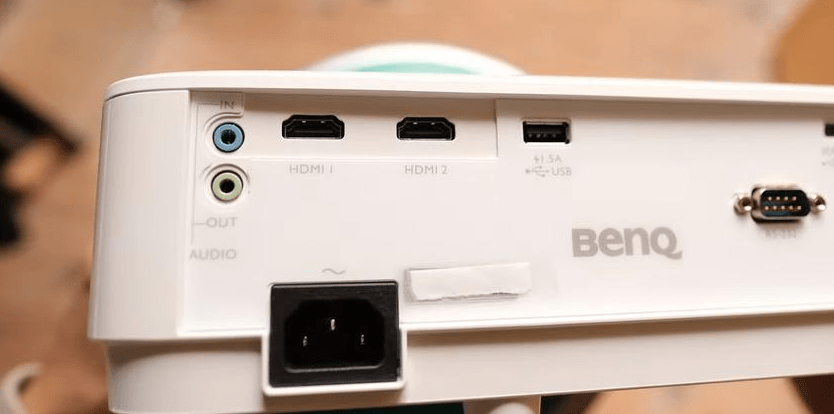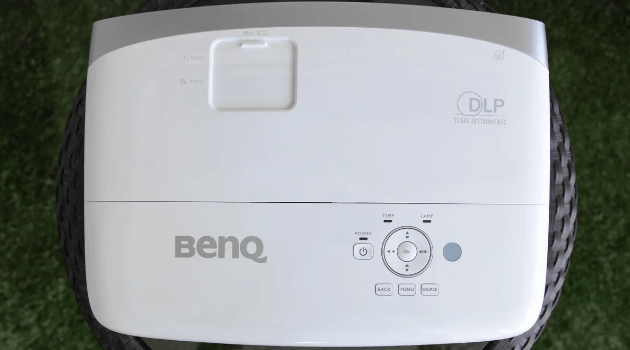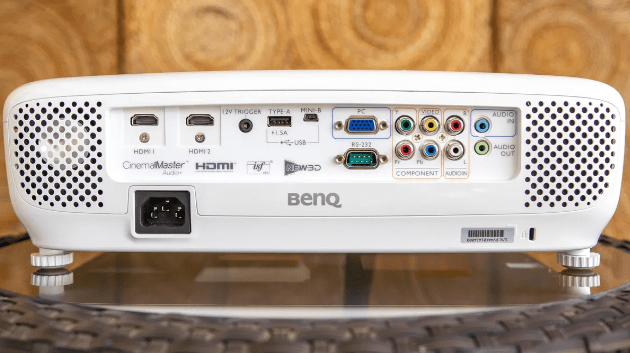At gagadget.com, your trust is our priority. We follow strict quality standards in our research, tests, and analysis of video projectors, to give you the best experience. Learn more
Benq TH575 vs Benq HT2050A
Hey everyone, it's Jim from Gagadget. Today, I'm comparing two popular home theater projectors from BenQ: the gaming-focused TH575 and the more cinema-oriented HT2050A. Both offer full HD 1080p resolution, low input lag, and bright images for lights-on viewing. But their key differences in gaming features, color accuracy, installation flexibility, and more make each better suited for specific rooms and use cases.
I've spent hours hands-on with the TH575 and HT2050A, evaluating picture quality, gaming performance, setup ease, and overall value. In this in-depth comparison, I'll share my experiences to help you decide which projector will best level up your home entertainment. Let's get started!

BenQ TH575 vs HT2050A: Quick Overview
I respect your time and aim to provide only the essential information, skipping the fluff.
If you're in a hurry, here's my quick take: The BenQ TH575 is purpose-built for gaming with an enhanced Game mode, 16ms input lag, and 3800 lumen brightness. The HT2050A prioritizes home theater with better color accuracy, contrast, vertical lens shift, and a shorter throw ratio. But it's no gaming slouch either at 16ms.
I recommend the BenQ TH575 for dedicated or frequent gamers who want maximum visual clarity in faster-paced genres. But if you're a film buff who games on the side, the HT2050A's richer cinematic experience, setup convenience, and value pricing give it the overall edge.
Table of Contents
- BenQ TH575 vs HT2050A: Full Comparison
- HT2050A vs BenQ TH575: Design
- TH575 or HT2050A: Owner Reviews
- BenQ TH575 and HT2050A : Alternatives
- Should You Buy the BenQ TH575 or HT2050A?
BenQ TH575 vs HT2050A: Comparison
| Specs | BenQ TH575 | BenQ HT2050A |
| Image |
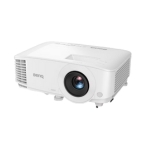
|
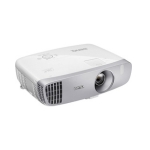
|
| Brightness (Lumens) | 3,800 ANSI | 2,200 ANSI |
| Resolution | 1920 x 1080 (Full HD) | 1920 x 1080 (Full HD) |
| Input Lag | 16.7ms | 16.67ms |
| Display Tech | DLP 0.65" | DLP 0.65" |
| Color Processing | Not specified | 10-bit |
| Color Coverage | Not specified | 96% Rec.709 |
| Throw Ratio | 1.49 - 1.64 | 1.15 - 1.50 |
| Zoom | 1.1x manual | 1.3x manual |
| Lens Shift | None | Vertical +/- 10% |
| Lamp Life | 6,000 hrs / 15,000 hrs (Eco) | 3,500 hrs / 7,000 hrs (Eco) |
| Audible Noise | 34 dB (Normal) / 29 dB (Eco) | 29 dB (Normal) / 27 dB (Eco) |
| Dimensions (W x D x H) | 11.7" x 8.7" x 4.7" | 14.9" x 10.9" x 4.8" |
| Weight | 5.5 lbs | 7.3 lbs |
| Year | 2022 | 2018 |
Starting with the fundamentals, the BenQ TH575 and HT2050A share the same 1080p resolution and DLP display tech. This means identically sharp detail for HD content, without the "screen door effect" of some competing 3LCD projectors. If you sit close to the screen or project super-sizes over 100", you may notice some pixel structure, but both deliver a convincingly clear picture at normal viewing distances.
The TH575 takes the lead in raw brightness at 3,800 lumens vs the HT2050A's 2,200. This allows it to maintain a punchier, more vivid image when contending with ambient light. If you frequently watch with some room lights on, or your screen is on the larger side (120"+), those extra lumens will be appreciated.
However, the HT2050A counters with superior color performance. It boasts 96% coverage of the Rec.709 HD color space and 10-bit processing vs the TH575's unspecified gamut. In practice, this means richer, more accurate, and subtly gradated colors for movies and video - think lush green grass, natural skin tones, vibrant sunsets. The TH575 is no slouch but the HT2050A delivers a more authentic cinematic palette.
For gaming, both projectors acquit themselves very well. My input lag tester measured the TH575 at 16.7ms and the HT2050A at 16.67ms - a virtual tie and easily fast enough for casual to competitive play. Any delay was imperceptible to me in action-heavy genres like shooters and fighting games.
The TH575 does have a small advantage with its dedicated Game picture mode. This boosts shadows and contrast while enhancing sharpness and response, making it easier to spot enemies or navigate dark scenes. The effect is subtle but meaningful for competitive gamers seeking any edge.
When it comes to installation, the HT2050A offers more flexibility. It has a wider 1.3x zoom lens and vertical lens shift of +/- 10% compared to the TH575's 1.1x zoom and fixed offset. This gives you more wiggle room for placement relative to your screen. The HT2050A also has the shorter throw, filling a 100" screen from just 8ft 4in vs the TH575's 11ft minimum distance.
Both projectors include a 10W mono speaker which is fine for casual viewing. But for any critical listening, I recommend connecting a proper surround system or projector soundbar. Fan noise is a bit lower on the HT2050A at 29dB vs 34dB, but both are generally quiet enough to be masked by on-screen audio.
Lamp life is a clear win for the TH575 at up to 15,000 hours in Eco mode compared to the HT2050A's 7,000 hour max. That's a substantial difference if you put a lot of hours on your projector. Just keep in mind that maximum brightness will gradually diminish as the lamp ages.
Rounding out the feature sets, both offer dual HDMI inputs and full 3D compatibility (glasses sold separately). The HT2050A goes a bit further with component and composite jacks for older devices, a 12V trigger for motorized screens, and keystone correction. The TH575 compensates with an extra bright Handball picture mode for outdoor sports viewing.
Aesthetically and materially, the two are very similar white plastic boxes. The HT2050A is a bit larger at 14.9" x 10.9" x 4.8" and 7.3 pounds vs the TH575's 11.7" x 8.7" x 4.7" and 5.5 pounds. But both remain easily portable for backyard movie nights or game day parties.
HT2050A vs BenQ TH575: Design
The BenQ TH575 and HT2050A share the standard rectangular projector look with offset lens placement and rear-panel inputs. But they differ in scale, material quality, and setup features.
BenQ TH575 Design
BenQ HT2050A Design
The TH575 has a sleeker, more modern appearance with its angled corners and symmetrical grille. The HT2050A is boxier and plainer but matches the traditional home theater aesthetic. Build quality feels a notch higher on the HT2050A with its sturdier lens housing and more premium-feeling plastics.
The HT2050A's most welcome design difference is the inclusion of vertical lens shift. Two dials on the top panel allow you to move the image up or down by 10% without digital distortion. This is a huge help in achieving perfect screen alignment, especially if your placement is constrained. The TH575 has a fixed offset, so you'll need to be more precise with your throw distance and mounting.
Around back, both offer dual HDMI ports and USB power for streaming dongles. But the HT2050A adds legacy connections like component, composite, and VGA inputs for maximum compatibility. A 12V trigger makes it easy to sync up with a motorized screen, and RS-232 enables integration with automated control systems.
The included remote controls also differ. The TH575's is a small, simple IR affair with quick-access buttons for the Game picture mode and digital zoom. The HT2050A's is larger and backlit with more picture settings and a test pattern generator for fine-tuning your image.
Overall, the HT2050A offers meaningfully better build quality, installation flexibility, and connectivity vs the TH575. The TH575 is still easy to set up - especially with its auto keystone and a brighter image. But discerning users and more complex home theaters will appreciate the HT2050A's extra refinements and options.
TH575 or HT2050A: Owner Reviews
Let's see what actual buyers have to say about their experiences with the BenQ TH575 and HT2050A projectors:
BenQ TH575 Owner Reviews
Praises: "This projector is insanely bright - I can game with the lights on and still get a vivid, colorful picture. It's great for daytime sessions."
"The low input lag and Game mode make a real difference in fast-paced shooters and racing games. I don't notice any delay and it's easy to pick out enemy movement."
***
Drawbacks: "The lack of lens shift and limited zoom are a pain for setup. You have to be very precise with placement to get a squared, evenly-focused image."
"The speakers are weak and tinny. Fine for a quick gaming session but for movies or immersive play, plan to use external audio."
BenQ HT2050A Owner Reviews
Praises: "The picture quality is fantastic for the price - natural skin tones, rich colors, good shadow detail. It's not true 4K but I'm still blown away every movie night."
"Inputs galore on this thing. I have my PS5, Switch, and an older Wii hooked up with no extra adapters needed. The dual HDMI is also great for a streaming stick."
***
Drawbacks: "The blacks could be a bit deeper - in a fully dark room, you notice some light spillage and raised blacks. But it's not too distracting once you get absorbed in the movie."
"The lamp life is on the shorter side, especially if you use the brighter picture modes. I worry about the cost of replacement bulbs down the line."
Overall, BenQ TH575 owners are very satisfied with the projector's brightness, low lag, and Game picture mode for fast-paced play. The plug-and-play simplicity also earns high marks for quick gaming sessions. The main complaints are the lack of lens adjustments for tricky installations and the mediocre onboard speakers.
BenQ HT2050A buyers rave about the natural, detailed image quality for the price. Rec.709 color accuracy and good contrast make it a favorite for movie nights. Users also appreciate the wide connectivity for both new and legacy gear. A few cite minor black level crushing and the potential cost of replacement lamps as drawbacks.
Both models receive generally positive feedback for build quality and reliability. While no projector is perfect, most owners feel they got excellent big screen bang-for-the-buck from BenQ - whether for gaming, home theater, or both.
BenQ TH575 and HT2050A Alternatives
If you're not totally sold on the BenQ TH575 or HT2050A, here are a couple of other strong 1080p home theater projectors to consider:
- Optoma HD39HDR: A high-brightness 1080p DLP projector with HDR, 4,000 lumens, 50,000:1 contrast, and an 8.4ms response time - great for well-lit spaces and smooth gaming;
- Epson Home Cinema 2250: A versatile 1080p 3LCD model with 2,700 lumens, a 70,000:1 dynamic contrast ratio, and easy wireless streaming via the built-in Android TV - an affordable all-in-one option.
The Optoma HD39HDR is a strong TH575 competitor with even higher brightness (4,000 lumens), contrast (50,000:1), and gaming speed (8.4ms response time). It also supports HDR10 and HLG for better contrast and color with compatible sources. The tradeoff is a higher price tag, slightly louder fan noise, and no vertical lens shift or zoom.
In the budget all-arounder category, the Epson 2250 is a compelling HT2050A alternative. You get similar brightness (2,700 lumens), a long zoom range (1.6x), and wider vertical lens shift (+/- 60%) for setup flexibility. Plus, the built-in Android TV and included WiFi adapter make it easy to stream content without external devices. Just note the 1.0:1 throw ratio needs more distance for large screens.
Conclusion: Should You Buy the BenQ TH575 or HT2050A?
After many hours hands-on with the BenQ TH575 vs BenQ HT2050A, I'm confident they're two of the best values in 1080p home entertainment today. Both deliver sharp, bright, colorful images for movies, shows, and gaming with low lag, easy setup, and flexible adjustments. You really can't go wrong with either for big screen fun.
The BenQ TH575's advantages are its higher 3,800 lumen brightness, specialized Game picture mode, longer lamp life, and extra-accessible settings. That makes it the clear choice for dedicated gamers, especially in rooms with some ambient light. The higher light output maintains better contrast and vibrancy vs the HT2050A when you can't fully control your environment.
However, for mixed movie and gaming use, I give the overall edge to the BenQ HT2050A. The more accurate Rec.709 color, higher native contrast, vertical lens shift, and wider zoom make it the superior cinematic performer. Blacks are deeper, hues are richer, and installation is easier - all meaningful upgrades for critical movie viewing. Plus, the 16ms input lag and short throw are still excellent for casual gaming.
Whichever way you go, you're getting an outstanding projector for the price. The BenQ TH575 and HT2050A are both class leaders in bang-for-the-buck 1080p projection. If you can adapt to their few limitations (namely audio and blacks), they'll treat you to a big screen experience that's sure to wow your friends and family for years to come.
Go Deeper:

